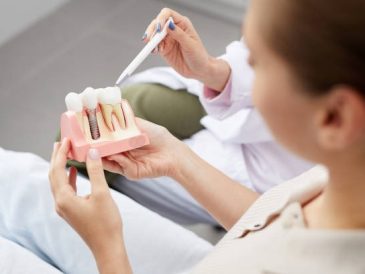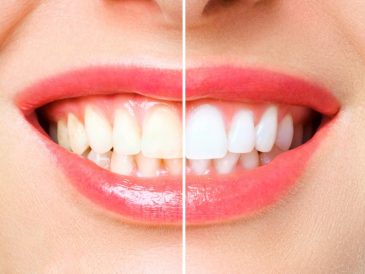When it comes to beautifying your child’s smile, the choice between Invisalign and traditional braces can be daunting. Both options aim to correct dental issues, but they come with unique characteristics. Whether your child requires minor adjustments or more extensive realignment, understanding these differences will help you make an informed decision. Let’s discuss the key aspects of these two orthodontic solutions that can shape the comfort level of your child.
1. Appearance and Discretion
One of the most significant differences between Invisalign and traditional braces is their appearance. Invisalign aligners are made from clear plastic, making them practically invisible. For children who feel self-conscious about their looks, this can be a game-changer. On the other hand, traditional braces consist of metal brackets and wires, which are more noticeable. If you’re in the area and considering orthodontic options, Smile Greensboro orthodontist can guide you in deciding whether Invisalign or traditional braces best suit your needs.
Pros and Cons of Aesthetic Appeal
-
Invisalign: Discreet, less noticeable, might boost a child’s confidence.
-
Traditional Braces: More visible, known to change facial appearance, yet customizable with colorful bands.
2. Comfort and Fit
Comfort is essential when considering orthodontic solutions for your child. Invisalign aligners are custom-made to fit snugly over teeth, which generally makes them more comfortable than traditional braces. There’s no metal or wires involved, reducing the risk of irritation, soreness, or injury to the mouth’s interior.
3. Ease of Maintenance
Maintaining dental hygiene is a crucial habit, especially when braces or aligners are involved. Assessing how easy it is to care for each option can be critical in choosing the right orthodontic treatment for your child.
Daily Cleaning and Care
-
Invisalign: Aligners are removable, which means your child can brush and floss normally, reducing the risk of cavities and gum disease.
-
Traditional Braces: Require careful cleaning around brackets and wires to prevent food buildup, which could prove challenging for younger kids.
4. Dietary Restrictions
Dietary flexibility can also play a significant role in deciding between these treatments. With traditional braces, certain foods are off-limits to avoid damaging the brackets and wires. Sticky or hard foods, for instance, can be problematic. Invisalign offers more freedom, as the aligners can be removed during meals, allowing your child to enjoy their favorite foods without worry.
5. Effectiveness and Speed of Treatment
The ultimate goal is to achieve that perfect smile, but naturally, you’d want to know how long each method will take. Traditional braces are often considered more versatile when it comes to handling complex dental issues. These may include severe crowding or misalignment, which may lead to a longer treatment duration but potentially effective results. Invisalign can work faster in less complex cases, but it might require discipline, as wearing aligners for the recommended 20-22 hours a day is crucial for effectiveness.
6. Check-ups and Adjustments
Regular check-ups ensure that orthodontic treatment is progressing as planned. Traditional braces typically necessitate monthly appointments for adjustments and wire tightening. On the flip side, visits for Invisalign often occur every 6-8 weeks and involve receiving a new set of aligners to continue with the treatment.
Doctor Visits Frequency
-
Invisalign: Fewer and less frequent adjustments might suit a busier schedule.
-
Traditional Braces: Regular visits offer a more constant monitoring of progress.
7. Financial Considerations
Cost is always a determining factor for parents looking into orthodontic care. Traditional braces generally tend to be more cost-effective than Invisalign. However, prices can vary based on the complexity of the treatment required, insurance coverage, and even the region or orthodontist’s expertise. That said, the decision should ultimately weigh heavily on comfort and the effectiveness of each method for your child’s specific needs.
8. Compliance and Responsibility
Compliance is key with any orthodontic treatment, especially with Invisalign, which relies on the wearer’s responsibility to ensure they’re worn properly. This might be an area of concern for younger children or those who tend to misplace things. In contrast, once traditional braces are fitted, they cannot be removed until the orthodontist does, resulting in continuous tooth alignment.
9. Choosing the Right Option
Both Invisalign and traditional braces have strengths and shortcomings when it comes to comfort and treatment goals. Aligners might be more kid-friendly for those who are conscious of their appearance and prefer an unobtrusive solution, while traditional braces might be more suitable for serious adjustments. A consultation with an Invisalign dentist will provide personalized advice based on your child’s dental needs.
10. Making Dental Care a Priority
Ultimately, when deciding between Invisalign and traditional braces, it is of utmost importance to consider how both affect overall dental care for kids. Encouraging them to maintain oral hygiene, regardless of the choice, ensures a seamless experience that prioritizes their dental health.
Final Thoughts
Whether you and your child opt for the subtlety of Invisalign or the proven effectiveness of traditional braces, comfort often comes down to personal preference and specific needs. Connecting with a Smile Greensboro orthodontist can be invaluable in making the right, informed decision. Remember that an orthodontic journey is not just about correcting smiles but ensuring that maintaining them becomes a habit. By selecting the treatment that best suits their lifestyle and dental condition, you pave the way for a happier, healthier smile for your child.





